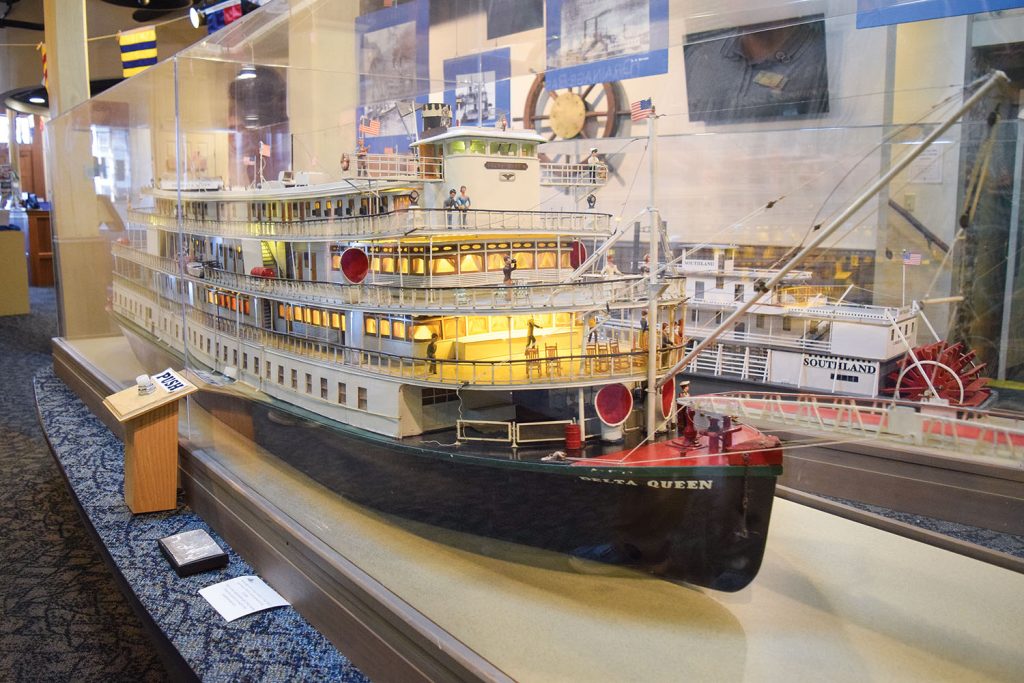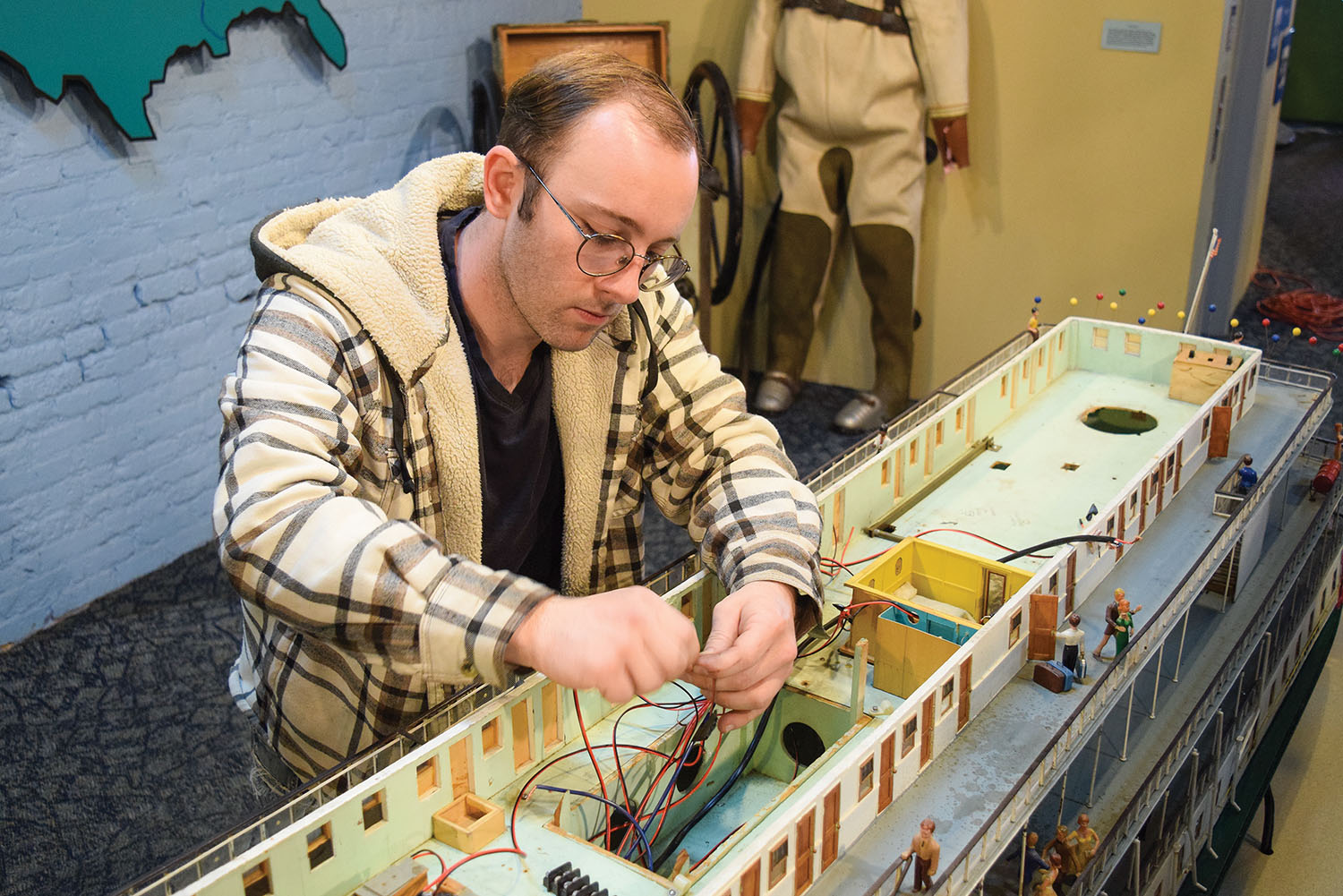A $10,000, grant-funded refurbishment of the Inland Waterways Museum’s 9-foot model of the Delta Queen means visitors can once again see the paddlewheel turn and hear the sound of calliope music.
The project is one of the first major endeavors of a $7 million museum renovation plan announced in August, the same day the Paducah, Ky., museum, formerly the River Discovery Center, announced its name change and celebrated its 20th anniversary. Paducah-based firm Micro-IT completed the work without the wooden model ever leaving the museum, carefully taking it apart and outfitting it with new technology, including replacing a music system that formerly operated from a cassette tape.

Now, at the touch of a button, lights come on, the paddlewheel turns and “Darktown Strutters’ Ball” plays.
The work was funded by a grant from J.F. Brennan Company.
The model, a creation of Guy Williams of Cincinnati, Ohio, was designed to be propelled on small bodies of water, such as the lake at Paducah’s Noble Park, but it was gifted to the museum to preserve and protect it, museum marketing coordinator Caroline Veatch said. Museum staff had heard stories that the model once included lights, music and movement, but those features hadn’t worked in years.
Staff and volunteers have also been hard at work in other parts of the museum, which closed the week of February 19-23 for renovations. They included demolition of three exhibits that involved the use of running water: a rain table, hydroelectric dam and lock and dam. All were in place since the museum opened in 2003 and had not worked in more than a year, Veatch said. They were also expensive to maintain, she said.
In all, about 400 square feet of exhibit space has been reconfigured so far, in part thanks to gifts from donors, including Ingram Barge Company and JD Fields & Company.
Highlights of the newly designed space include towboat models that have not been in a publicly accessible area of the museum for some time, along with two antique Peterborough rowboats, carefully restored by volunteers John Crivello and Richard Schipp.
“While we don’t know the year they were built, we believe the Peterboroughs were brought in during the 1937 flood to rescue those stuck inside their houses,” Veatch said.
Additionally, the museum has added an exhibit inviting visitors to build a towboat out of Lego building bricks and to see whether it floats.
The museum’s fundraising campaign for its renovation continues, with hopes that funding will allow the complete refurbishment over the next five to 10 years. Information on contributing to the renovation are available on the museum’s website at www.inlandwaterways.org.
Caption for top photo: Richard Benson of Micro-IT works on the DQ model. (Photo courtesy of the Inland Waterways Museum)



